Evolutionary Ecology
The department of Evolutionary Ecology gathers complementary skills in behavioural ecology, population dynamics, population biology, community ecology, and methodology (statistics and modelling). The research done in the department aims at studying how animal species evolve in a changing world by understanding the causes of the evolution of traits, adaptations and interactions. For that, we consider different levels of organization from individuals to populations and communities. Because organisms cannot be considered isolated from other biotic factors, we consider pathogens but also competing species within communities.
We study how individuals adapt to their environments that are largely impacted by anthropic pressures, and how life history traits and behaviour evolve in response to these pressures. Although we mainly focus on phenotype, we more and more consider the mechanistic link between the genotype and the phenotype. We develop the theoretical framework of our discipline through a conceptual and modeling approach. In parallel, we test hypotheses that arise from theoretical predictions through experimental, comparative and observational approaches on different biological models (insects, birds, mammals). Experimental approaches are developed in the laboratory (insect model) and in natura (bird, insect and mammal models). Observational and comparative research is mainly concerned with vertebrates. Our approaches are also, and increasingly, interested in the mechanisms of adaptive responses. In addition to the classical approaches of demographic analysis and trait change, methods of ecophysiology, chemical ecology and molecular biology are used.
Our department hosts several long-term studies of wild populations of different species. These long-term studies offer a valuable way to understand how biotic and abiotic factors affect individuals’ life history traits, and the functioning of populations in natura. Five populations of mammalian species are thus monitored for several years (more than 40 years on roe deer, 30 on Alpine marmots, 25 years on cats, 16 years on zebras, and 20 years on impala). Two of our study sites (La Sassière in Vanoise National Park (Alpine marmots) and Hwange National Park) have been certified as “Site d’Etude en Ecologie Globale” (SEEG), and two (ZA “Hwange” and ZA “Antarctic and sub-Antarctic”) were certified as “Zone Atelier” by the CNRS.
The department of Evolutionary ecology is also largely involved in training activities. Lastly, we also have strong socio-economic relationships. Indeed, because we address questions of major societal interest (global warming, public health) we tightly collaborate with socio-economic partners (Office Français de la Biodiversité, Vanoise National Park, Hwange National Park in Zimbabwe, Office National des Forêts, etc.) and participate to general public and media events.
Publications
Display of 871 to 900 publications on 2459 in total
Coexistence of two sympatric cryptic bat species in French Guiana: insights from genetic, acoustic and ecological data
BMC Evolutionary Biology . 18 ( 1 ) : 175
Journal article
see the publicationConservation et écologie du Grand rhinolophe: Que nous apprennent les analyses moléculaires?
17. Rencontre Nationale des Chauves-Souris .
Conference paper
see the publicationThe ground plot counting method: A valid and reliable assessment tool for quantifying seed production in temperate oak forests?
Forest Ecology and Management . 430 : 143-149
Journal article
see the publicationLandscape genetics matches with behavioral ecology and brings new insight on the functional connectivity in Mediterranean mouflon
Landscape Ecology . 33 ( 7 ) : 1069-1085
Journal article
see the publicationSocial behaviour as a predominant driver of sexual, age-dependent and reproductive segregation in Mediterranean mouflon
Animal Behaviour . 136 : 87-100
Journal article
see the publicationCoping with change in predation risk across space and time through complementary behavioral responses
BMC Ecology . 18 ( 1 )
Journal article
see the publicationMigrating ospreys use thermal uplift over the open sea
Biology Letters . 14 ( 12 ) : 20180687
Journal article
see the publicationProcess-based vs. ad-hoc methods to estimate mortality using carcass surveys data: A review and a note about evidence complacency
Ecological Modelling . 384 : 111-118
Journal article
see the publicationThe ground plot counting method: A valid and reliable assessment tool for quantifying seed production in temperate oak forests?
Forest Ecology and Management . 430 : 143-149
Journal article
see the publicationSame habitat types but different use: evidence of context-dependent habitat selection in roe deer across populations
Scientific Reports . 8 ( 1 )
Journal article
see the publicationBank voles in Southern Eurasia : vicariance and adaptation
Journal of Mammalian Evolution . 25 ( 1 ) : 119–129
Journal article
see the publicationMating-induced differential peptidomics of neuropeptides and protein hormones in Agrotis ipsilon moths
Journal of Proteome Research . 17 ( 4 ) : 1397-1414
Journal article
see the publicationMetabarcoding for the parallel identification of several hundred predators and their prey: Application to bat species diet analysis
Molecular Ecology Resources . 18 ( 3 ) : 474-489
Journal article
see the publicationEvaluation de méthodes diagnostiques en l’absence de gold standard sur la base de variables binaires et continues : intérêt de l'approche bayésienne
Journée AppliBUGS . : 38 slides
Conference paper
see the publicationDiagnosis of bovine dictyocaulosis by bronchoalveolar lavage technique: A comparative study using a Bayesian approach
Preventive Veterinary Medicine . 154 : 124-131
Journal article
see the publicationCauses and consequences of variation in offspring body mass: meta-analyses in birds and mammals
Biol. Rev . 93 : 1 - 27
DOI: 10.1111/brv.12329
Journal article
see the publicationThe influence of early‐life allocation to antlers on male performance during adulthood: Evidence from contrasted populations of a large herbivore
Journal of Animal Ecology . 87 ( 4 ) : 921-932
Journal article
see the publicationEstimating individual fitness in the wild using capture–recapture data
Population Ecology . 60 ( 1-2 ) : 101-109
Journal article
see the publicationEarly and Adult Social Environments Shape Sex-Specific Actuarial Senescence Patterns in a Cooperative Breeder
The American Naturalist . 192 ( 4 ) : 525-536
DOI: 10.1086/699513
Journal article
see the publicationCoexistence of two sympatric cryptic bat species in French Guiana: insights from genetic, acoustic and ecological data
BMC Evolutionary Biology . 18 ( 1 )
Journal article
see the publicationCoexistence de deux espèces cryptiques de chauves-souris en Guyane française : apprentissages à partir de la génétique de l’acoustique et de l’écologie
Plume de Naturalistes . 2 : 169-190
Journal article
see the publicationSpatio-temporal variation of the greater horseshoe bat (Rhinolophus ferrumequinum) diet in Western France: applications to chirosurveillance and conservation strategies
International Conference on Ecological Sciences (Sfécologie 2018) .
Conference paper
see the publicationThe greater horseshoe bat (Rhinolophus ferrumequinum) diet : Optimisation of arthropods DNA identification in guano samples
International Conference on Ecological Sciences (Sfécologie 2018) .
Conference paper
see the publicationComposition of marsupial zona pellucida: a molecular and phylogenetic approach
Reproduction, Fertility and Development . 30 ( 5 ) : 721
DOI: 10.1071/RD16519
Journal article
see the publicationAnalysis of ZP1 gene reveals differences in zona pellucida composition in carnivores
Reproduction, Fertility and Development . 30 ( 2 ) : 272
DOI: 10.1071/RD17022
Journal article
see the publicationEvolving Teeth Within a Stable Masticatory Apparatus in Orkney Mice
Evolutionary Biology . 45 ( 4 ) : 405 - 424
Journal article
see the publicationEffects of interspecific coexistence on laying date and clutch size in two closely related species of hole-nesting birds
Journal of Animal Ecology . 87 ( 6 ) : 1738-1748
Journal article
see the publicationDisentangling good from bad practices in the selection of spatial or phylogenetic eigenvectors
Ecography . 41 ( 10 ) : 1638-1649
DOI: 10.1111/ecog.03380
Journal article
see the publicationOptimizing the choice of a spatial weighting matrix in eigenvector-based methods
Ecology . 99 ( 10 ) : 2159-2166
DOI: 10.1002/ecy.2469
Journal article
see the publication
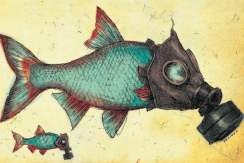
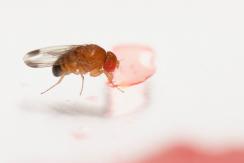
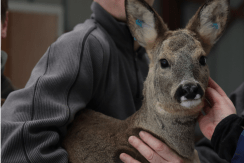
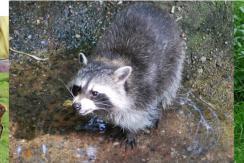
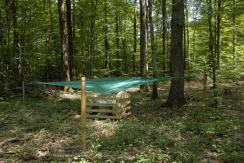
You also, comment on this article